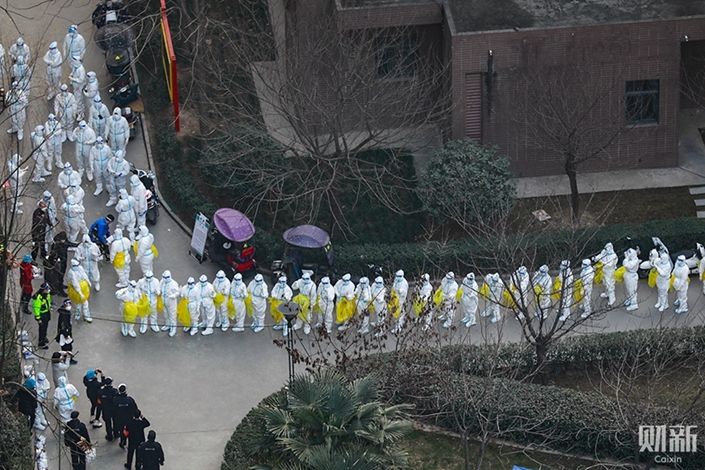
In the past two years, China’s vigorous policies effectively controlled the spread of Covid-19 in many cities. How great an impact did these policies have on the economy? Which economic activities have been more severely affected and which have been relatively less affected? How can the country balance the relationship between epidemic control and stable growth in the future? The outbreak that started in December 2021 in Xi’an may shed some light.
The outbreak began to worsen in the middle of that month, with the number of new confirmed cases rising from low single digits in early December to 10 on Dec. 18.
The government’s control measures were gradually enhanced. Entertainment venues were closed on Dec. 18. Schools were closed on the Dec. 20. On Dec. 23, businesses and institutions were encouraged to work from home and communities were sealed off. Each family could only have one member going out to purchase daily necessities every two days. Large gatherings such as conferences and performances were banned. On Dec. 27, the city implemented the strictest social control with residents being ordered to stay home except for Covid testing.
The outbreak continued until January this year. Since macro data for January has not been released, we can only observe its impact on December’s economic. Most of the monthly macro data released by Xi’an were cumulative year-on-year comparisons of this year with that of last year. Based on these comparisons, we cannot clearly see the impact of the outbreak on December specifically. So, we calculated the year-on-year comparisons of November and December based on government data.
The areas worst affected were consumption and investment. The government announced that the cumulative year-on-year growth of retail sales of businesses in Xi’an in November and December were 1.3% and -3.8% respectively. Based on this, we calculated that the year-on-year growth of total retail sales in November and December was -8.0% and -44.8%.
It is understandable that consumption was hit harder than industrial production. Consumers, who saw news of the outbreak before the tightening of policies, became cautious. And factory operating conditions may have not changed until government policies were announced. In addition, Xi’an has a well-developed tourism industry, making the impact of the outbreak on consumption particularly obvious. Even so, the 44.8% year-on-year drop in consumption is still astounding. After all, the epidemic only started to worsen in the middle of the month.
Investment growth slowed more than we expected. The cumulative year-on-year growth figures for total fixed asset investment announced by the government was -8.2% and -11.6% in November and December, respectively. Based on this, we estimate that the year-on-year growth figures for total fixed investment in November and December were -17.3% and -45.6% respectively. Real estate investment is slowing nationwide, and the pandemic could cause companies to delay investment decisions. Investments have long-term effects on the economy.
The growth rate of industrial production was also been negatively affected but to a lesser extent. The month-on-year growth figures for gross industrial output announced by the government were 15.4% and -3.7% in November and December, respectively. We noticed that the government did not issue a formal stop-work order in December, but encouraged everyone to work from home until Dec. 27. The policy of residents staying at home may have had a greater impact on industrial production, so most factories may not have been able to work for much of December. Industry may have been even more affected after the complete closure of the city on Dec. 27, which needs to be verified after the release of January data.
Imports and exports were least affected. This may be due to the fact that import orders were issued before the epidemic worsened, and factories which had not been shut down were able to export. We estimate that the year-on-year growth of exports in November and December was 47.9% and 24% respectively, and the year-on-year growth of imports was 22.1% and 16.9% respectively.
Xi’an’s experience tells us that once an outbreak expands to the extent that a city needs to be closed, there will be high economic losses, and a greater impact on consumption and investment. China’s economy is large, and the short-term closure of individual cities has little impact on national economic growth. However, if the epidemic spreads to more cities, the choice between controlling the epidemic and stabilizing growth will become more difficult.
Zhang Zhiwei is chief economist at PinPoint Asset Management Co. Ltd.
The views and opinions expressed in this opinion section are those of the authors and do not necessarily reflect the editorial positions of Caixin Media.
If you would like to write an opinion for Caixin Global, please send your ideas or finished opinions to our email: opinionen@caixin.com
Get our weekly free Must-Read newsletter.







